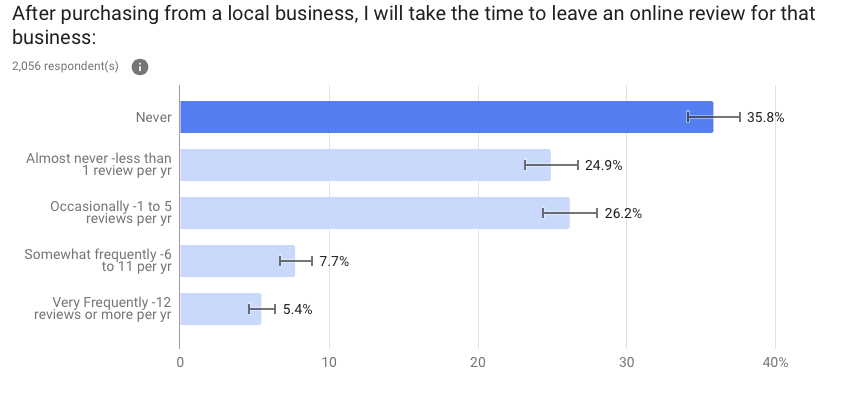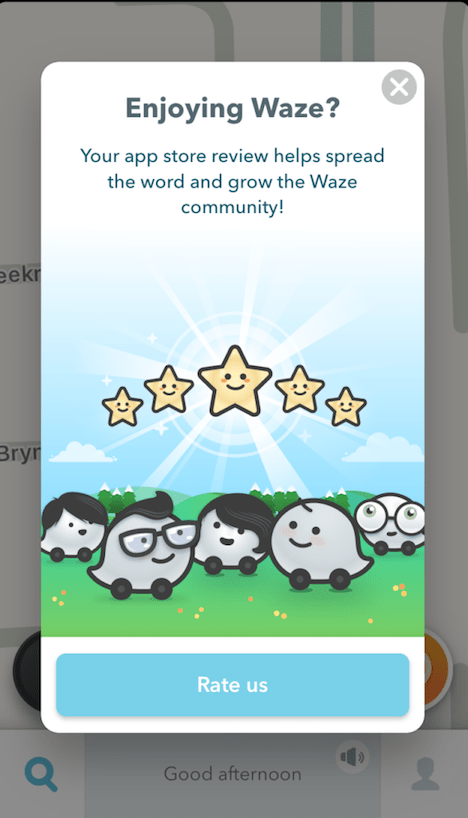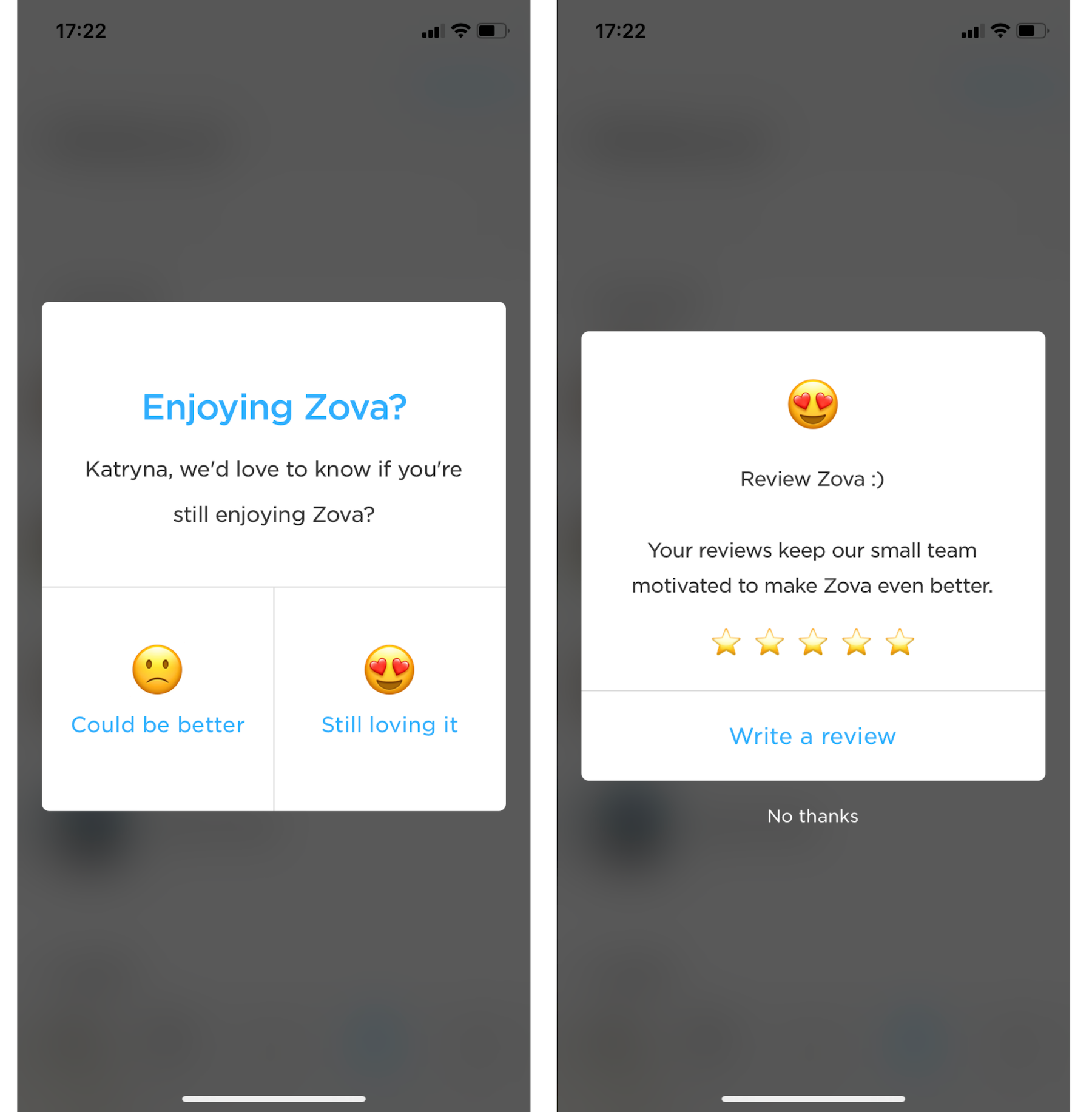How to ask for mobile app reviews: 4 examples of rating requests done right

.png)

.png)
Getting happy users to review your app is an essential component in any app marketing strategy, which is why app rating requests are such an important thing to get right.
App rating requests can provide you with valuable feedback about your app that help you make the changes and improvements your users want to see. And of course, user ratings directly impact your ranking in both the App Store and Google Play—more 5-star app ratings translate to a higher acquisition rate of new users.
Yet as any app owner knows, it’s incredibly difficult to get customers to leave a review:

There’s no one-and-done trick to getting users to review an app—the right approach will vary drastically between apps and audiences. But one thing’s for certain—the standard iOS and Android requests aren’t cutting it. You need to get creative with your app rating requests if you want them to be successful.
App rating requests tend to get a bad rep for being annoying. They disrupt the in-app experience and ask the user to complete a task that seems to have no immediate benefit for the user themselves. But in reality, app rating requests do serve to benefit the end user by providing them with a platform to voice their opinions and expedite real changes within the app they love (or would like to love, if only a few things could be done better) .
Because they’re disruptive, and require effort on the part of the user, it’s key to only present app review requests to your power users—regulars who frequent your app and already understand its value. Targeting power users will:
As for timing, prompt power users with a rating request when sentiment is highest —after they’ve completed a task or hit an important milestone.
Now that we’ve gone over a few best practices, let’s take a look at 4 examples of app review requests done well:

Waze’s colorful approach to an app rating request is delightfully different.It’s design is unlike any standard rating request, and it’s this distinction that gets the user to pause for a moment and consume the message.
The request pulls imagery seen within Waze’s interface, one that takes a gamified approach to commuting. Frequent users understand how important the community is to the success of the app, and Waze capitalizes on this with both the image (look how happy everyone looks with all those 5-star reviews floating overheard!) and messaging (“grow the Waze community!”).Together, this makes for a compelling app review request..

BabyCenter, a pregnancy and parenting app, doesn’t lead with a rating request. Instead, the focus on the feedback by asking “How are we doing?” and giving equal weight to both responses. This is a clever way to approach app rating requests because if a user is unsatisfied with your app, they can send feedback directly to you rather than detracting from your App Store score. This gives you the opportunity to glean valuable insights from users and address problems without it negatively impacting your ranking.

Drift’s in-app NPS tool for mobile allows product owners to get a sense of how users feel about their app. Depending on their response to the NPS survey, you can request that they rate your app or submit feedback instead. Similar to Google’s rating request, this approach allows you to control the narrative while still addressing important issues with users.
(Psst—Customers can use Appcues to create in-app NPS surveys on web or desktop. You can then trigger different followups based on user responses.)

Zova adds a little flair to their rating request with easily recognizable emojis. Users who choose the heart-eyed emoji—promoters—are then asked if they’d like to leave a review on the App Store; meanwhile, choosing the frowning face sends detractors to a feedback form. It’s a simple and original take on the classic rating request.
For most apps—and any company that has embraced a product-led growth business model—the journey from awareness to acquisition to adoption to retention isn’t linear. It’s connected by another stage: advocacy.
Happy users who advocate for your product bring in new users. Making it easy and appealing for users to review your product helps close the loop between advocacy and acquisition. Having a solid app rating request strategy helps turn power users into product champions and fuels exponential growth.